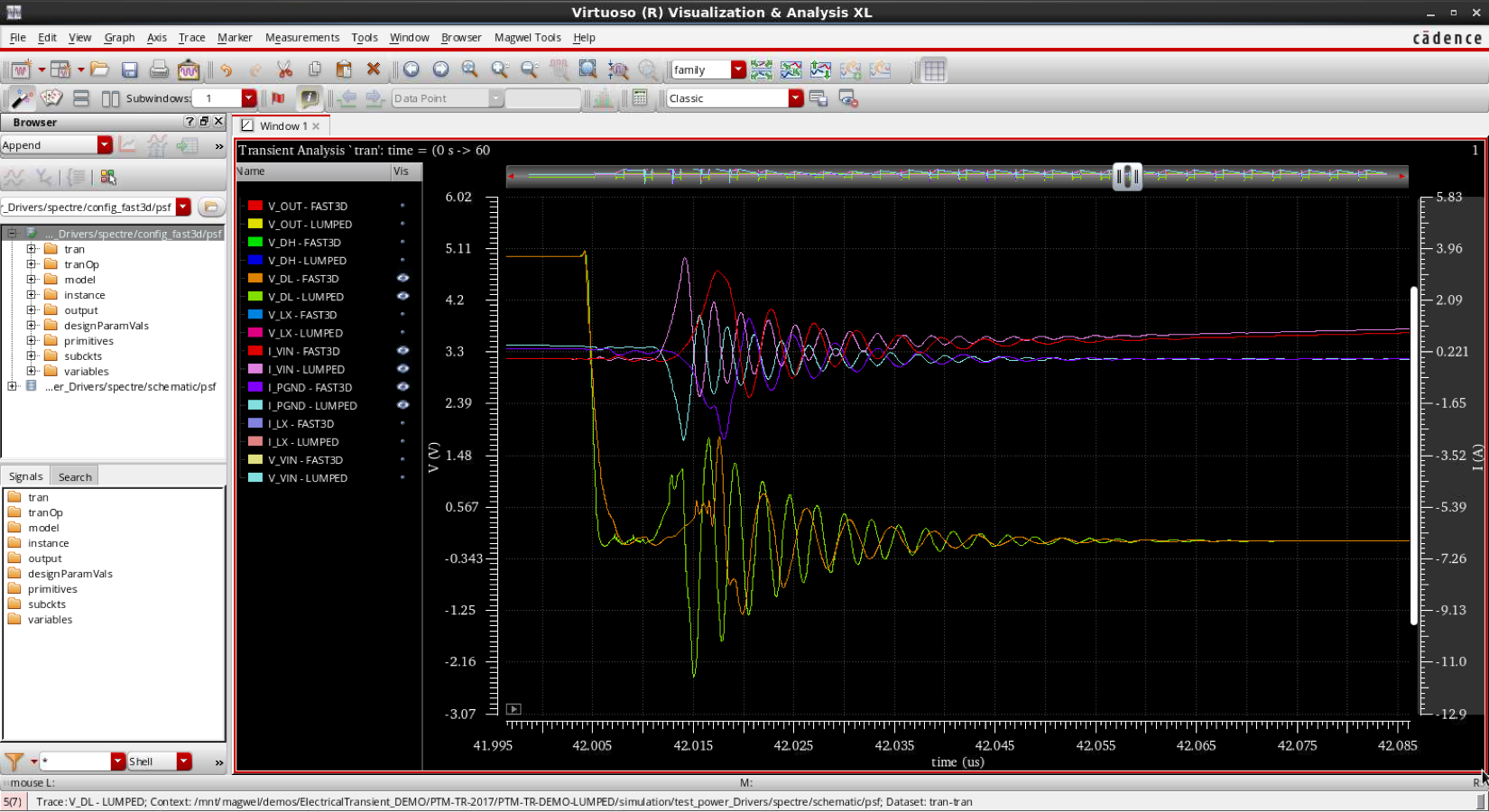Transient Analysis for Power Transistors (PTM-TR™)
Designing and optimizing Buck and Boost converters, DC-DC converters and switching power supplies entails minimizing switching-power loss, and reducing dead-time and shoot-through currents. Even more significantly, dynamic switching events can cause severe current crowding in metal layers that can lead to device failure or create reliability issues.
Click here to see a video of PTM-TR results for time steps through a high/low-side transition.
Finding performance and reliability issues in power transistor designs before tape out can be quite challenging because traditional layout parasitic extractors don’t do a good job extracting parasitics in large power transistors. These devices exhibit non-uniform 3D current flows and current crowding due to their wide complex metal structures. It’s important to be able to simulate and then analyze circuit behavior at the physical level to ensure proper operation.
PTM-TR™ is a solution for incorporating detailed and accurate models for power devices and converter circuits into the simulation flow enabling a much more accurate optimization of the key performance parameters of converter circuits. Adding transient modeling to its line of power transistor modeling tools, Magwel® now offers complete integration into Cadence Spectre and ADE for circuit simulation using comprehensive models that include non-uniform device switching effects.

Lumped model versus PTM-TR™ Fast3D model simulation results. Fast3D model colors are red, purple and gold. Lumped model colors are pink, cyan and green.
- Highlights peak currents and current crowding
- Enables improvement of transistor switching performance
- Helps minimize dead-time and shoot-through current in DC-DC converters
- Analyzes signal propagation delays in gate nets
- Reports non-uniform switching of device fingers
- Determines Miller coupling to the Gate of a fast dV/dt transient in the Drain
Part of the PTM® Product Family

